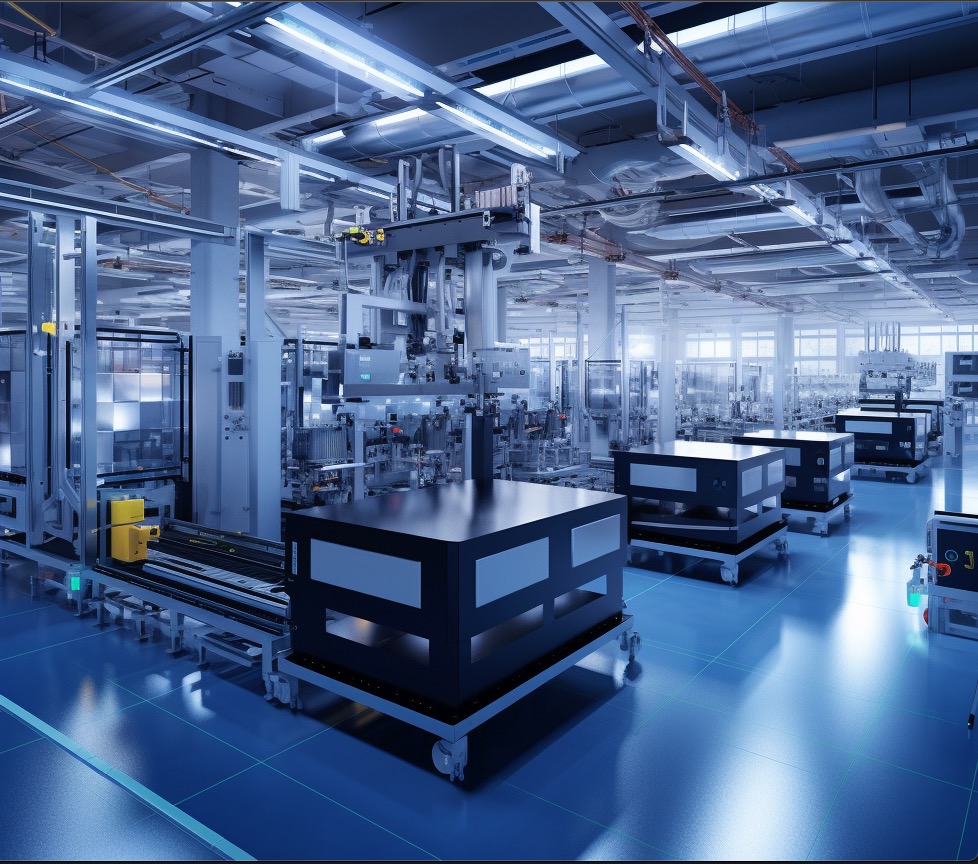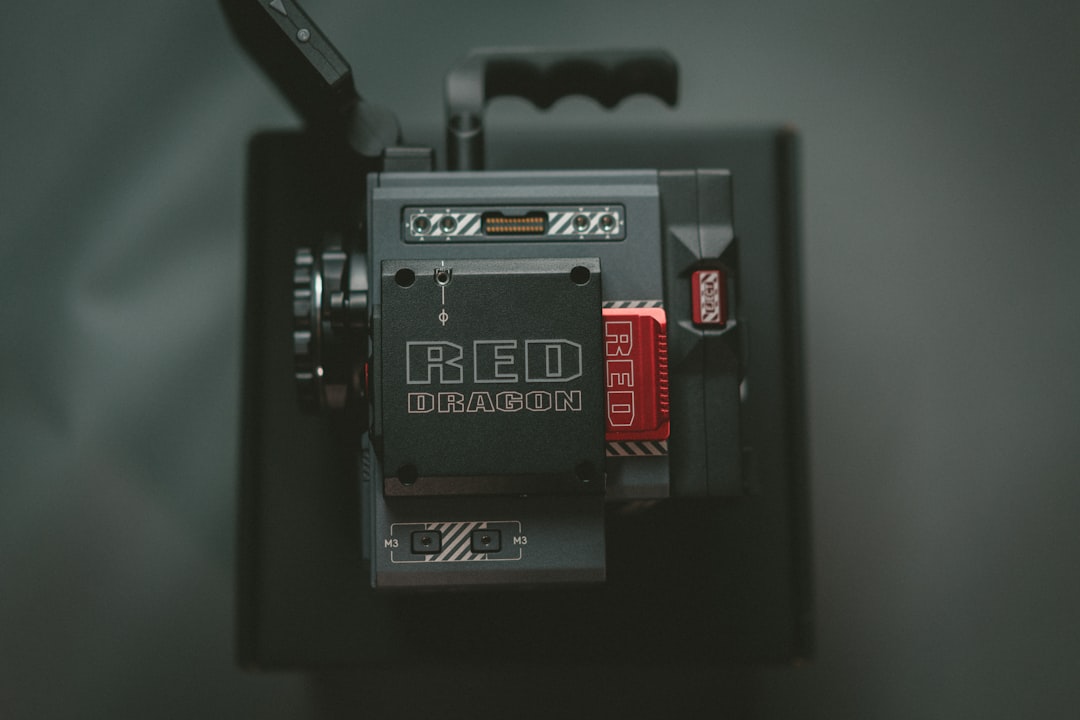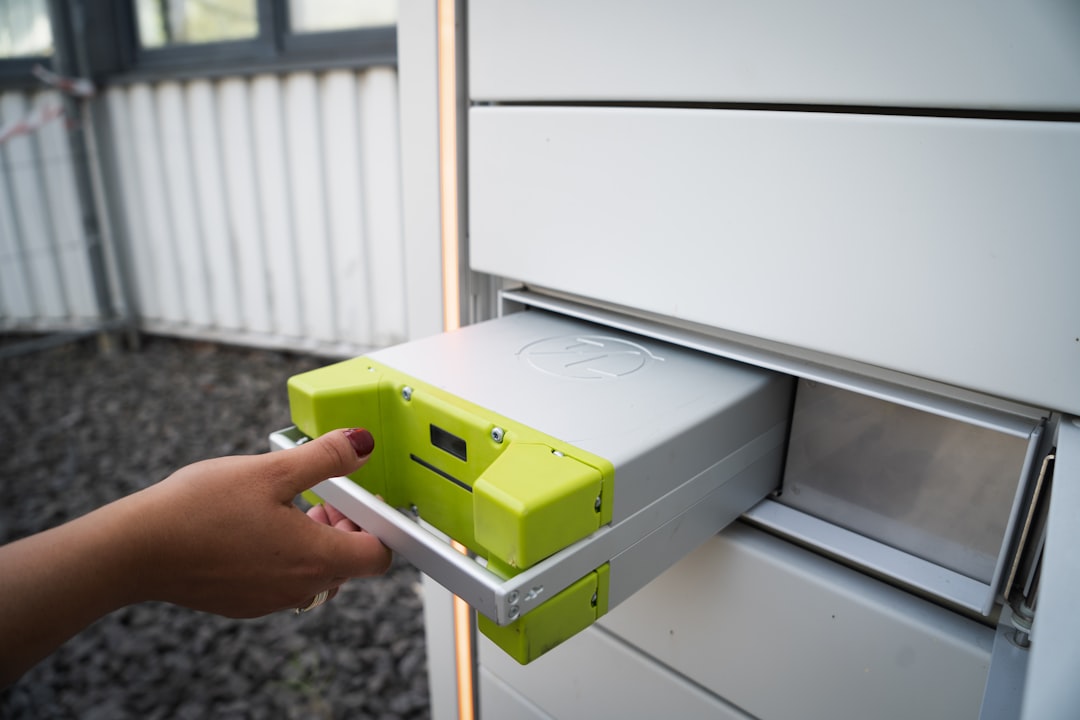
As the demand for energy storage solutions continues to grow, LiFePO4 batteries have emerged as a promising technology due to their efficiency, reliability, and safety. However, scaling up the production and performance of LiFePO4 batteries is not without significant challenges. In this article, we explore the key challenges of scaling LiFePO4 battery production and highlight some innovative strategies and solutions to overcome these challenges. Keep reading to learn more!
Understanding LiFePO4 Battery Technology
LiFePO4 batteries are a type of lithium-ion battery that are increasingly being used in energy storage applications due to their durability, safety, and high performance. They are composed of lithium iron phosphate as the cathode and carbon as the anode, separated by an electrolyte.
LiFePO4 batteries have several advantages over other types of lithium-ion batteries. They have a longer cycle life, which means that they can be charged and discharged more times without losing capacity. They also have a lower discharge rate, which means that they can deliver energy over a longer period of time. In addition, LiFePO4 batteries are more stable than other types of lithium-ion batteries, which makes them less likely to catch fire or explode.
LiFePO4 batteries are being used in a variety of applications, including residential and commercial energy storage, electric vehicles, and backup power systems. They are particularly well-suited to residential battery storage because of their high capacity and long cycle life.
Despite their advantages, LiFePO4 batteries still face several key challenges in scaling up production. These challenges include:
- Cost: The cost of LiFePO4 batteries is still relatively high compared to other types of lithium-ion batteries. This makes them less competitive in some markets.
- Supply chain: The supply chain for LiFePO4 batteries is still developing, which can lead to supply shortages and higher costs.
- Research and development: There is still a lot of research and development needed to improve the efficiency, capacity, and charging speed of LiFePO4 batteries.
- Environmental impact: The mining and production of the materials used in LiFePO4 batteries can have a significant environmental impact, particularly if not properly regulated.
- Recycling: There is currently no standardized recycling process for LiFePO4 batteries, which can lead to environmental contamination and a waste of valuable resources.
- Regulations and standards: There is a lack of consistent regulations and standards for LiFePO4 batteries, which can lead to uncertainty and higher costs for manufacturers.
- Testing: There is a need for standardized testing procedures to ensure the safety and performance of LiFePO4 batteries.
- Capacity: The current capacity of LiFePO4 batteries is limited, which can be a barrier to scaling up production.
- Thermal management: LiFePO4 batteries have a lower thermal capacity than other types of lithium-ion batteries, which can make them more prone to overheating.
- Market growth: The market for LiFePO4 batteries is still developing, which can lead to uncertainty and risk for manufacturers.
- Innovation: There is a need for continued innovation in the design and production of LiFePO4 batteries to improve their performance and reduce costs.
- Sustainability: As demand for LiFePO4 batteries grows, there is a need to ensure that their production and use is sustainable over the long term.
Overall, LiFePO4 batteries have significant potential for the energy storage market. However, to fully realize this potential, manufacturers must overcome several key challenges in scaling up production. Through continued innovation and investment in research and development, it is likely that these challenges can be overcome, making LiFePO4 batteries a key component of the move towards a more sustainable, renewable energy future.

The Rise of LiFePO4 Batteries in Energy Storage
In recent years, there has been a growing demand for residential battery storage solutions to support the integration of renewable energy sources into the grid. As a result, many homeowners and businesses are turning to lithium-ion batteries, specifically LiFePO4, due to their high energy density, durability, and long lifespan.
LiFePO4 batteries are a type of lithium-ion battery that are composed of iron phosphate as the cathode material. Compared to other lithium-ion batteries on the market, LiFePO4 batteries are known for their superior safety and stability, as they are less prone to thermal runaway and do not contain toxic or harmful chemicals.
Furthermore, LiFePO4 batteries have a longer lifespan and can handle a higher number of charge-discharge cycles compared to traditional lead-acid batteries commonly used in residential energy storage systems. This means that homeowners can rely on their LiFePO4 battery systems for longer periods without having to replace them frequently, resulting in cost savings in the long run.
The rise of LiFePO4 batteries in energy storage is also driven by the increasing demand for sustainable and efficient energy solutions, as more people are becoming aware of the environmental and economic benefits of renewable energy sources. As a result, the market for LiFePO4 batteries is expected to grow significantly in the coming years.
However, despite their many advantages, scaling the production of LiFePO4 batteries for residential energy storage poses several key challenges that must be addressed. These challenges range from manufacturing and supply chain to performance and safety concerns, which will be explored further in the next section.
Key Challenges in Scaling LiFePO4 Batteries
Scaling LiFePO4 batteries for residential energy storage faces several key challenges. Here are the top 12 challenges:
- Manufacturing Capacity: Lithium-ion battery technology is relatively new, and the manufacturing process is complex, requiring sophisticated equipment and highly trained personnel. This limits the production capacity of LiFePO4 batteries, and manufacturers need to invest in more production lines.
- Energy Density: The energy density of LiFePO4 batteries is lower than that of other lithium-ion technologies, such as NMC or LMO. This means that a larger battery is required to store the same amount of energy, limiting the scalability of LiFePO4 batteries.
- Cycle Life: While LiFePO4 batteries have an impressive cycle life, they still degrade over time and require replacement eventually. This makes recycling batteries essential to reduce environmental impact.
- Discharge Rate: The discharge rate of LiFePO4 batteries is lower than other lithium-ion technologies, meaning they can't deliver as much power as faster-discharging batteries.
- Charging Speed: LiFePO4 batteries charge more slowly than other lithium-ion batteries, meaning they take longer to recharge.
- Thermal Management: LiFePO4 batteries generate heat when they charge and discharge, which can reduce their lifespan. Effective thermal management strategies must be implemented for safe and reliable operation.
- Safety: While LiFePO4 batteries are generally safe, they can still experience failures, such as thermal runaway. Battery safety standards must be met to avoid dangerous consequences.
- Cost: The materials used to manufacture LiFePO4 batteries are relatively expensive, and the production process is labor-intensive. This makes LiFePO4 batteries more expensive than conventional lead-acid batteries, limiting their adoption in the market.
- Supply Chain: The supply chain for LiFePO4 batteries is not as well-established as for other battery technologies, making it challenging for manufacturers to secure the raw materials required for production.
- Regulations and Standards: Regulations and standards for Lithium-ion batteries are evolving, and manufacturers must comply with these regulations to ensure safe operation.
- Testing and Certification: LiFePO4 batteries must go through rigorous testing and certification processes to ensure they meet safety and performance standards, which can be costly and time-consuming.
- Market Growth: While the market for residential energy storage is growing, LiFePO4 batteries face competition from other battery technologies, such as NMC or LMO. Manufacturers need to stay ahead of the curve and continually innovate to maintain or capture market share.
Overall, scaling LiFePO4 batteries for residential energy storage faces several significant challenges, but with continued innovation, research, and development, these challenges can be overcome.
Challenges in Manufacturing LiFePO4 Batteries
Manufacturing LiFePO4 batteries at scale for residential battery storage poses several challenges, ranging from availability of raw materials to mass production efficiency. Here are some key challenges faced in manufacturing LiFePO4 batteries:
- Supply Chain Management: Managing the complex supply chain of raw materials, including lithium, iron, phosphate, and cobalt, can be challenging due to the geopolitical landscape and environmental regulations in various regions.
- Research and Development: To ensure product innovation and differentiation in an increasingly competitive market, research and development is critical. However, the high costs involved and the need to continually upgrade processes make it challenging for battery manufacturers to stay ahead.
- Manufacturing Efficiency: Due to the complex process and high-quality control standards of LiFePO4 battery production, manufacturing at a scalable level becomes a significant challenge. The production process involves several stages, including mixing, coating, calendaring, and assembling, which can cause delays in production if one stage fails.
- Safety and Durability: Safeguarding the production process and ensuring the long-term safety and durability of the battery is vital. Manufacturers must adhere to stringent safety and quality control standards while maintaining a high level of quality assurance throughout the production process.
- Cost Management: Cost-effectiveness is a critical factor in the growing residential battery storage market. Manufacturers must ensure that the price of producing LiFePO4 batteries remains consistent with market demand.
- Disposal and Recycling: Ensuring the proper disposal and recycling of LiFePO4 batteries is crucial. As demand for the batteries continues to grow, manufacturers must improve recycling technology and optimize recycling processes to mitigate environmental impacts.
- Regulation: The manufacture and sale of LiFePO4 batteries are regulated by several bodies, including state and federal agencies. Battery manufacturers must remain vigilant and stay up-to-date with industry regulations and meet regulatory standards.
- Quality Assurance: Consistency in quality and performance is necessary when manufacturing LiFePO4 batteries. Mass production can make it challenging to maintain top-quality levels, and ensuring consistency in battery performance at scale remains a key challenge.
- Logistics and Transportation: The transportation of LiFePO4 batteries can be complex due to the nature of the chemicals used. Manufacturers must ensure the transportation of batteries adheres to regulations while preventing damage or hazardous situations.
- Testing: Ensuring battery performance and quality requires various testing throughout the production process. However, implementing a testing system that tests all batteries is challenging when dealing with mass production.
- Capacity and Efficiency: As demand for LiFePO4 batteries for residential storage grows, manufacturers must ensure they increase production capacity while maintaining efficiency levels, so the batteries remain affordable for consumers.
- Thermal Management: Proper thermal management is vital in maintaining battery safety, durability, and performance, and can be a challenge to maintain when scaling LiFePO4 battery production.
Achieving mass production of LiFePO4 batteries at scale requires overcoming these and other challenges in manufacturing, performance, safety, and durability. Addressing these challenges will help promote the growth of residential battery storage and other renewable energy applications that rely on safe, efficient, and affordable batteries.

Challenges in Performance, Safety, and Durability
LiFePO4 batteries are known for their superior performance, safety, and durability compared to other lithium-ion battery chemistries. However, scaling production can lead to unforeseen challenges that impact these key factors.
Here are some challenges that manufacturers and researchers face in scaling LiFePO4 batteries:
- Capacity and Cycle Life - Capacity and cycle life are critical factors in battery performance. A higher capacity and longer cycle life make the battery more appealing to consumers, increasing demand. LiFePO4 batteries have a lower theoretical energy density, which can make it challenging to improve capacity and cycle life without sacrificing other essential factors such as safety and cost.
- Discharge Rate and Charging Speed - LiFePO4 batteries have a lower discharge rate compared to other lithium-ion batteries. Slower discharge rates can limit the use of LiFePO4 batteries in high-power applications, such as electric vehicles. Similarly, charging speed can be slower, which can also limit their application.
- Thermal Management - LiFePO4 batteries generate less heat than other lithium-ion batteries, reducing the risk of fire or explosion. However, when batteries are stacked together or packaged in a compact space, they can generate excessive heat, requiring an efficient thermal management system.
- Environmental Impact and Recycling – LiFePO4 batteries have a lower environmental impact than other lithium-ion batteries as they are free from toxic heavy metals, making it easier, cleaner, and safer to recycle these batteries. However, developing efficient and sustainable recycling facilities to process the increasing amount of LiFePO4 batteries is a challenge.
- Regulatory Compliance - As the demand for LiFePO4 batteries increases, regulatory compliance becomes a critical issue. Manufacturers need to ensure that their products comply with safety standards and regulations.
- Supply Chain - As demand for LiFePO4 batteries increases, the supply chain becomes more complex. Manufacturers need to have backup plans for sourcing raw materials and components, ensuring a steady supply chain.
- Cost - While the manufacturing costs of LiFePO4 batteries have decreased significantly, they remain more expensive than other lithium-ion batteries. Cost is a crucial factor in consumer adoption and commercial viability.
- Testing - Battery testing is essential to ensure performance, safety, and durability. However, testing can be time-consuming and expensive, making it a critical challenge in scaling LiFePO4 batteries.
To overcome these challenges, researchers and manufacturers are experimenting with various strategies such as new cathode materials, advanced manufacturing techniques, and improved thermal management systems. Additionally, investing in research and development helps to identify innovative solutions to tackle these challenges.
In conclusion, scaling LiFePO4 batteries presents many challenges in performance, safety, and durability. However, researchers and manufacturers are committed to finding solutions to overcome these hurdles, ensuring LiFePO4 batteries continue to be a sustainable and attractive option for consumers in the growing renewable energy market.
Innovations and Strategies for Overcoming LiFePO4 Battery Scaling Challenges
Scaling up LiFePO4 battery production for residential energy storage comes with major challenges, ranging from manufacturing to safety, durability, and performance. However, with conscious efforts, innovative strategies, and research and development, battery manufacturers and suppliers can overcome these bottlenecks and scale up their LiFePO4 battery production. In this section, we will explore some of the innovations, researches, and best practices that can facilitate the scaling of LiFePO4 battery production.
One of the most significant challenges in scaling up LiFePO4 batteries is the cost. LiFePO4 batteries are relatively expensive compared to other battery chemistries like lithium-ion batteries, which are more vastly produced and have solid established supply chains. LiFePO4 batteries are also relatively new in the market, so the cost of development and production is still high. However, with the rising demand for renewable energy storage solutions and LiFePO4 batteries' environmental sustainability, the market is bound to grow significantly, leading to lower costs. Suppliers can leverage economies of scale to drive the costs down and provide affordable LiFePO4 batteries.
Manufacturers can also invest in research and development to improve LiFePO4 batteries' performance, safety, durability, and efficiency. For instance, the cycle life of LiFePO4 batteries can be a limiting factor in scaling up. The battery's capacity to maintain efficiency after multiple discharge and charge cycles is crucial in energy storage systems. Researchers can concentrate their efforts on improving the intrinsic and extrinsic factors that affect LiFePO4 batteries' cycle life. Similarly, improving charging speed, thermal management, and discharge rate can enhance the batteries' performance and safety.
Another critical factor in scaling up LiFePO4 battery production is the supply chain and materials sourcing. Most LiFePO4 battery raw materials are sourced from China, and the government's regulations and export policies could impact the cost and availability of these materials. To overcome this challenge, suppliers should invest in diversification strategies for material sourcing and the supply chain. They should locate alternative supply sources for critical raw materials, develop partnerships with other suppliers or manufacturers, and establish reputable and reliable logistics channels and warehouses.
LiFePO4 batteries are known for their environmental sustainability compared to other battery chemistries, such as lithium-ion. As the demand for renewable energy storage solutions grows, there is a need to ensure that the batteries are manufactured, used, and disposed of in an environmentally friendly manner, considering their impact on the ecosystem. Therefore, recycling and safe disposal of LiFePO4 batteries is a crucial part of scaling up. Suppliers can invest in the development of a recycling system for LiFePO4 battery components and establish sustainable disposal methods to reduce environmental impact, meet the necessary standards, and comply with regulations.
In conclusion, scaling up LiFePO4 battery production presents challenges that can be overcome through conscious efforts, research, innovation, and best practices. By investing in research and development to improve performance, safety and durability, diversifying and securing supply chains for critical raw materials, optimizing cost and production processes, and investing in sustainable environmental practices, manufacturers and suppliers can overcome these bottlenecks and position themselves to grow in the renewable energy storage industry.
Article reviewed by: Glenn Jakins (CEO Humless)
